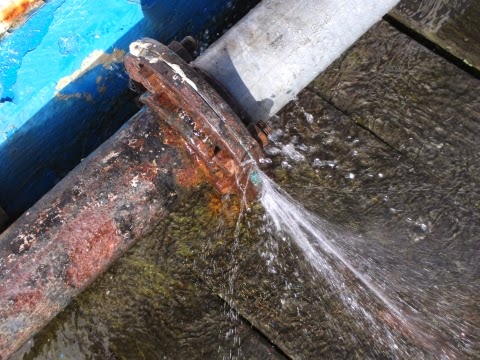Here down the page you can get lots of decent points when it comes to How to install a dishwasher safely.

A burst pipeline is a major emergency; you can only stand as you watch water you pay very much to reunite with the planet. In worse situations, you notice a swimming pool on your kitchen flooring, which is an excellent trip threat, specifically if you have kids around. If the pipe that burst was in your wall surfaces, trouble: you might need to repaint that whole area.
How can a catastrophe like a ruptured pipeline be protected against and managed? Well, by paying attention to your specialist emergency plumbing professionals and also adhering to these policies.
Just how do I understand when my pipes have ruptured?
Fluctuating water pressures
Pipes do not just burst in a day. You might have discovered that your kitchen faucet or shower does not run immediately when you turn the tap. It may stop for a couple of secs and then blast you with even more force than typical.
In various other circumstances, the water might seem normal initially, then decrease in pressure after a couple of seconds.
Wet walls and also water stains
Before a pipeline ruptureds, it will leak, the majority of times. If this relentless leaking goes undetected, the leak might graduate into a vast gash in your pipe. One simple means to prevent this emergency is to keep an eye out for wet wall surfaces advertisement water stains. These water stains will lead you right to the leakage.
Puddles under pipelines as well as sinks
When a pipeline ruptureds, the discharge forms a puddle. It may appear that the puddle is growing in size, and regardless of the amount of times you mop the puddle, in a couple of mins, there's another one waiting to be cleaned up. Usually, you may not be able to trace the pool to any kind of visible pipes. This is an indication to call a specialist plumber.
Untraceable dripping noises
Pipe ruptureds can happen in the most undesirable areas, like within concrete, inside wall surfaces, or under sinks. When the house goes quiet, you might have the ability to hear an irritatingly relentless leaking sound. Also after you have actually inspected your shower head as well as kitchen area tap, the trickling might proceed.
Beloved visitor, the leaking might be originating from a pipe inside your walls. There isn't much you can do about that, except inform a specialist plumber.
Shut down the Water
When water freezes, it increases in volume by regarding 9 percent. And it broadens with significant force: The stress inside pipes might go from 40 extra pounds per square inch to 40,000 psi! No pipeline can hold that much stress, so it bursts. The break may happen where the ice forms, but more frequently, it happens where water stress locates a weak spot in the pipeline. That might be inches and even feet from the icy location. Find the water shutoff valve as well as turn off the water to avoid more damage. You might also need to turn off the electrical energy also, relying on where the leakages takes place and how big it is.
Polluted water
Lots of people presume a ruptured pipe is a one-way outlet. Quite the contrary. As water spurts of the hole or gash in your plumbing system, contaminants find their way in.
Your water might be infected from the source, so if you can, examine if your water tank has any problems. However, if your drinking water is supplied and also detoxified by the city government, you need to call your plumber quickly if you see or smell anything amusing in your water.
What do I do when I spot a ruptured pipeline?
Your water meter will remain to run even while your water wastes. To reduce your losses, discover the main controls and transform the supply off. The water pipe are an above-ground structure beside your residential property.
How to Fix & Detect a Leaking Pipe
How Do I Know if a Pipe is Leaking?
Leak detection tests can help you determine if your pipe has a leak. Even if you don’t see an apparent leak, you should still conduct leak detection tests regularly to save water and money—and prevent major damage to your home.
Water meter. It can be helpful to figure out what your usual water meter usage numbers are and then monitor them regularly. To monitor your meter, first, turn off all water faucets in your home. Check the meter and write down the numbers. In a few hours, check the meter again. If the numbers have changed, you have a leak. Water gauge. Use a water gauge to test your water pressure. Your showerhead should produce a certain amount of water pressure based on its model and design. If the pressure is lower than it is supposed to be for that specific showerhead, your home likely has a leak. Puddles. Look inside your bathroom, laundry, and kitchen sink cabinets. Puddles around the cabinets or around toilets, tubs, showers, and washing machines indicate the presence of a leaking pipe. You may also notice loose tiles, peeling or flaking paint, or mold caused by water accumulation. Napkin test. Even if you don’t see any puddles, you may still have a leak. You can test for water leaks in the bathroom, laundry, and kitchen by wiping below-sink connections with a napkin, paper towel, or piece of toilet paper. If it becomes damp, you probably have a leaking pipe under the sink. Discolored walls. Walls that are discolored—usually with brown or yellow stains—or bulging might mean that they have been impacted by water damage caused by a leaking pipe. Smell. A leaky pipe will create sitting water, and over time, that water may develop a musty smell. If your home smells musty, but you can’t locate the source, it may be due to a leak. Steps for Fixing a Leaking Pipe
A leaky drain can be remedied by tightening the pipe base, replacing the drain seal, caulking the rim, and tightening the pipe nut. Similarly, a leaking toilet pipe can be treated by tightening the packing nut. You may also need to replace the valve. A leaky faucet may just need tightening or replacement of the washers. If that doesn’t work, consider replacing your faucet. If your pipe has a hole in it, you may want to use a pipe leak sealer or pipe leak tape. This quick fix for water pipe leaks can also temporarily fix a copper pipe leak. https://www.ahs.com/home-matters/quick-tips/how-to-tell-if-pipes-are-leaking/

Do you appreciate reading about How to Prepare for Your Dishwasher Installation? Make feedback below. We will be pleased to know your responses about this blog posting. Hoping that you come back again in the near future. Make sure you take the time to share this blog if you enjoyed reading it. Many thanks for your time spent reading it.
Hot water gone? Call.
 Rick Moranis Then & Now!
Rick Moranis Then & Now! Alisan Porter Then & Now!
Alisan Porter Then & Now! Jenna Jameson Then & Now!
Jenna Jameson Then & Now! Andrew Keegan Then & Now!
Andrew Keegan Then & Now! Burke Ramsey Then & Now!
Burke Ramsey Then & Now!